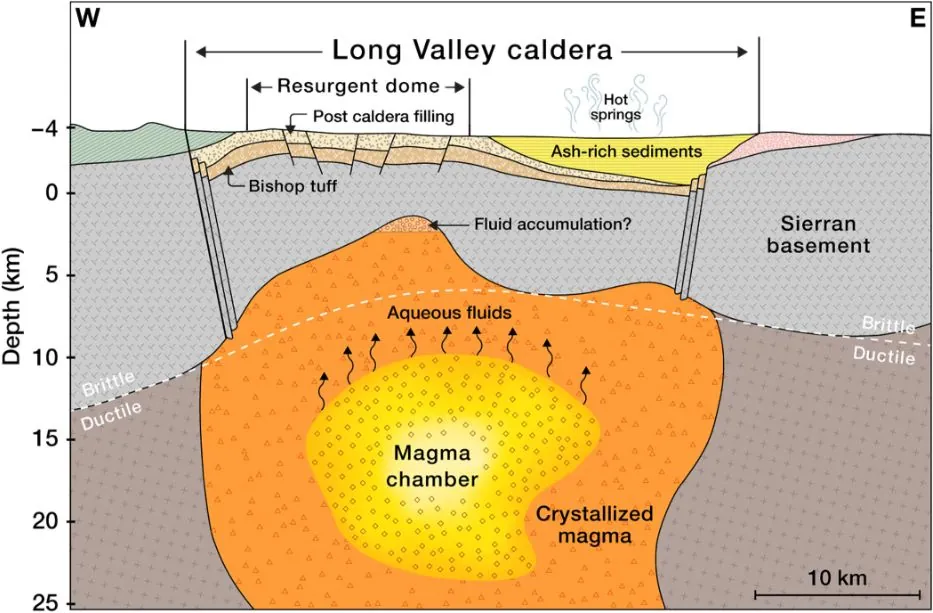New research clarifies causes of uplift and seismicity in California’s Long Valley Caldera
A recent geophysical study on California’s Long Valley Caldera has unveiled the mechanisms behind its seismic activity and uplift. The research, published in Science Advances, utilized distributed acoustic sensing and machine-learning algorithms to reach its conclusions.
The study focused on imaging the subsurface structure of the Long Valley Caldera, a caldera located about 322 km (200 miles) east of San Francisco and approximately 402 km (250 miles) north of downtown Los Angeles. Using a 100-km (62-mile) fiber-optic cable that traversed the caldera, researchers collected distributed acoustic sensing data. The images produced showed a clear separation between the shallow hydrothermal system and the large magma chamber located at approximately 12 km (7.5 miles) depth.
This new data supports the theory that the observed uplift and seismicity are driven by fluids released through a process known as second boiling. These fluids originate from the magma chamber and not from an intrusion of new magma into the upper crust. The study thus rules out the potential for a supervolcanic eruption driven by magma intrusion in the near future.
In terms of public safety, the Long Valley Caldera was categorized as a “very high threat” by the U.S. Geological Survey in 2018. This classification is determined by a combination of the volcano’s potential hazard and the number of people and properties that could be impacted.

The research also employed machine-learning algorithms to further analyze the data, enhancing the reliability of the findings. These methods have added a new dimension to the study of the caldera, which was formed by a super-eruption approximately 760 000 years ago that ejected 583 km3 (140 mi3) of magma. This event covered much of east-central California in hot ash that even reached present-day Nebraska.
The Long Valley Caldera has been a subject of scrutiny for decades, especially after noticeable increases in earthquakes and ground fluctuations that began four decades ago. For instance, there were four magnitude 6 earthquakes in the Long Valley area in May 1980.
It is worth noting that while the latest findings provide crucial insights into the mechanisms behind the caldera’s unrest, they also underscore that the area remains capable of powerful earthquake swarms. Therefore, continuous monitoring and further research are essential for understanding the long-term risks associated with this geologically active area.
References:
1 An upper-crust lid over the Long Valley magma chamber – Biondi et al. – Science Advances – October 18, 2023 – DOI: 10.1126/sciadv.adi9878 – OPEN ACCESS
2 One of California’s riskiest volcanoes is very active. Is an eruption coming? – Los Angeles Times – October 28, 2023
Featured image: ScienceAdvances/Authors

Commenting rules and guidelines
We value the thoughts and opinions of our readers and welcome healthy discussions on our website. In order to maintain a respectful and positive community, we ask that all commenters follow these rules.